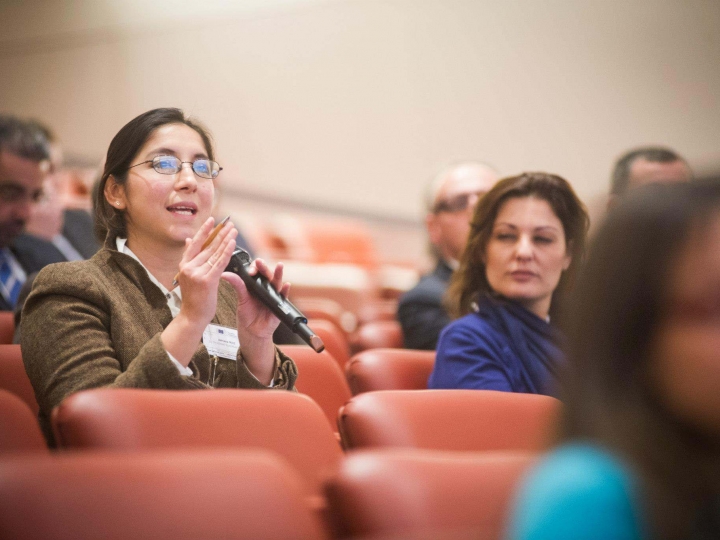Text: Adriana Ruiz is a political scientist and wrote her master's thesis on how the EU-Mexico trade agreement affected women’s rights in ME. She is head of the board of the Likestillingsnettverket Sør in Kristiansand (an equality network in southern Norway).
You see, it is not unusual that the vast lack of awareness on gender-based violence often leads to mistrust on the importance of this date. Usually, people think that the necessity of this day is bigger in some regions than in others. Assuming that violence against women is limited to some regions whilst in others, the fight is over.
As an activist organizing events on women’s rights, I realize that instead of neglecting such an important question, my job is to answer it as good as I can. This is the perfect opportunity to shed light on violence against women and girls as a global phenomenon and it is also the perfect opportunity to engage several persons in this important fight.
Background
The background of this day has its roots in the Dominican Republic anno 1960, when the Mirabal sisters were brutally murdered by order of the country’s ruthless dictator Rafael Trujillo. But It wasn’t until the year 2000 that the United Nations General Assembly designated this day as the day for the elimination of violence against women. The purpose of it is to raise awareness on all forms of violence, and its consequences to society. It is therefore important to create a dialogue between the civil society and authorities worldwide. And to bring this dialogue to the UN, to create pressure on the commitment to the protection and the promotion of women’s rights.
Violence against women and girls is a widespread and persistent violation of the basic human rights of women. It comes in all shapes and colours as it can vary from psychological, sexual, economic, and institutional violence, to the most extreme form of violence against women, femicide.

The UN estimates that 1/3 of women and girls experience physical or sexual violence in their lifetime, most frequently by an intimate partner.
Systematic violence
Violence against women is often hidden behind closed doors or hiding behind the so-called “family matters”. Because of its secret nature, it might be difficult to identify and even confront. But it is happening constantly. Statistically speaking, even for those who show scepticism for this day, it is most likely that we know more than one woman who is a victim of gender-based violence.
The UN estimates that 1/3 of women and girls experience physical or sexual violence in their lifetime, most frequently by an intimate partner. Worldwide, almost 750 million women and girls alive today were married before their 18th birthday; while 200 million women and girls have undergone female genital mutilation. 71% of all human trafficking victims worldwide are women and girls. Furthermore, it is estimated that 87 000 women were intentionally killed in 2017 and that 58 % of these casualties were murdered by an intimate partner or a family member. Meaning that the great majority of intentional killings took place at one’s home, which makes it the most dangerous place on earth for women.
Though statistics are important to understand how widespread this phenomenon is and its consequences to society, it is vital that understand that each number has a story of despair, negligence and impunity. For example, the story of activist Maria Escobedo, whose daughter, Rubí Frayre was murdered by her own boyfriend. This is the story of a mother who experienced impunity and a system that neglects the most vulnerable. But it also tells the story of resilience. When Rubí’s murderer was exonerated, Marisela became one of the strongest activists in Mexico. She started a national movement to shed light on femicides in the country. After two years of awareness raising, she was shot and killed while she was giving a speech on violence against women.
The invisibility, normality and impunity of this phenomenon stand as obstacles for authorities who investigate any casualty of violence against women.
As an activist, my sole commitment to the eradication of violence against women starts with awareness raising, which is why 25th of November is one of the most important days in the calendar.
The NHRF invites different actors within the human rights field to contribute on this blog. The opinions expressed here are those of the authors.

